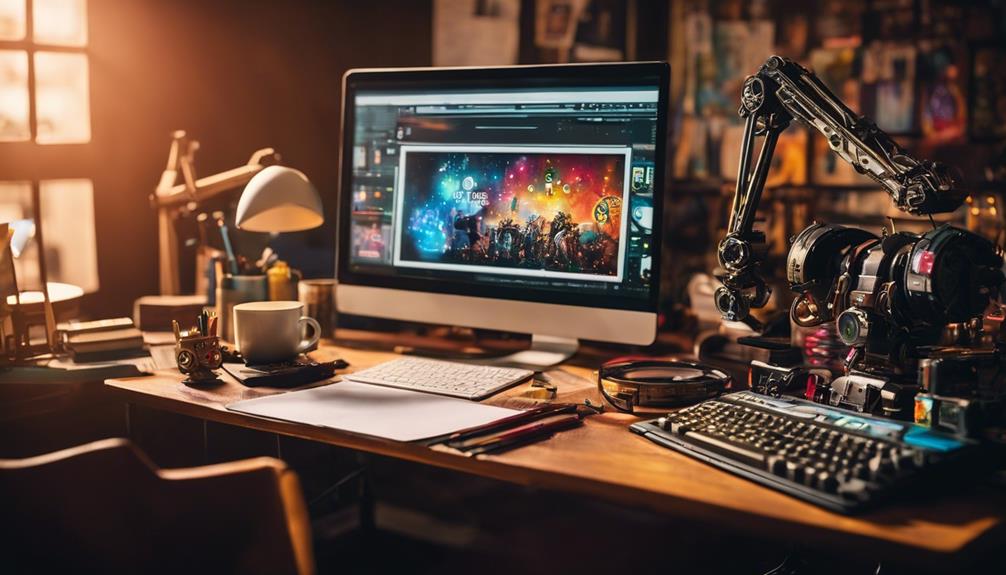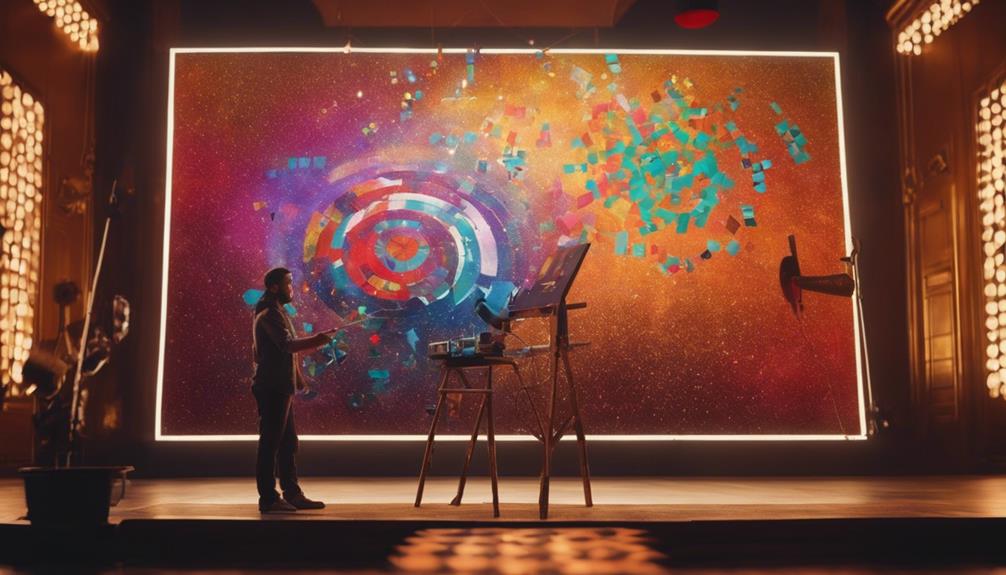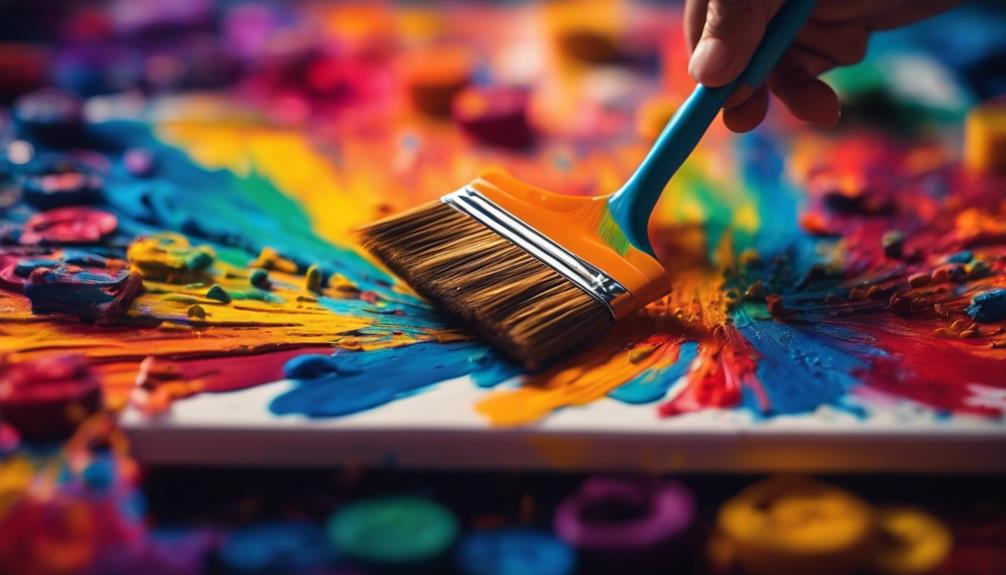Maximizing Creative Commons in AI Art
In AI artwork, using Creative Commons (CC) licenses is vital for artists who want to share their work while respecting others’ rights. These licenses help ensure that artists follow the law and give proper credit where it’s due. They also promote a spirit of sharing and working together, which is vital for the development of AI art.
Five tips for using Creative Commons in your AI art projects are crucial. First, understanding how these licenses work is a must. They can seem complex, but they’re about sharing art responsibly. Second, always make sure to give credit to the original creators. This is not just about following the rules; it’s about showing respect for the work that has inspired you.
Choosing the proper CC license for your work is another crucial step. There are several options, each with rules about how others can use your work. It’s all about balancing protecting your rights and allowing your job to inspire new creations.
Collaboration is at the heart of the CC community. When you use a CC license, you join a global group of artists who believe in open access to creativity. This can open doors to new opportunities and connections.
Lastly, keep up with changes in the law and Creative Commons policies. The digital world is constantly changing, and what’s true today might not be true tomorrow. Staying informed helps you protect your work and respect others’ rights.
By following these tips, you can be part of a movement that values innovation and respect in the digital art world.
Key Takeaways
In the realm of AI artwork, embracing Creative Commons licenses is crucial for artists looking to share their creations while honoring the rights of others. These licenses facilitate a culture of mutual respect and innovation in digital art. Here are three concise tips for integrating Creative Commons into your AI art endeavors:
- Understand Creative Commons licenses to share art responsibly.
- Credit original creators to show respect for their inspiration.
- Stay informed on legal and policy updates affecting digital art.
By adopting these practices, artists contribute to a community that values openness and respect in the evolving landscape of digital art.
Understanding CC Licenses
Creative Commons licenses are essential for artists, especially those working with AI, to create new art. These licenses help set clear rules on how others can use their work. They cover things like ensuring the artist gets credit, setting boundaries around commercial use, or changing the original piece. This is especially important in AI art, where new creations often challenge old rules about who owns what.
Creative Commons licenses support the needs of AI artists well. They allow these creators to control how their work is shared. This means they can keep their creations safe from being used in ways they disapprove of while also letting others build on their work positively. For artists using AI, understanding these licenses is critical. It helps them stay on the right side of the law and ensures their contributions to the art world remain open for others to enjoy and expand upon.
Sourcing AI-Compatible CC Works

When creating art with artificial intelligence, it’s crucial to use Creative Commons licensed works that fit AI needs. This involves understanding the rules around making changes to these works and using them for business purposes. Here’s what to keep in mind:
- Choose licenses that allow changes: If you’re making new art based on an original work, ensure the Creative Commons license permits modifications. This is key to avoiding legal issues while letting you be as creative as possible.
- Match the license to your project: The license of the original work should allow for how you plan to use your AI-created art, whether it’s for learning, personal projects, or selling.
- Be aware of business use limits: Many Creative Commons licenses do not allow their work to be used for making money. If your project aims to earn revenue, find content that’s okay to use commercially.
- Always check and give credit: Double-check the license details of any work you use to ensure you follow the rules. Also, crediting the original creator is a legal must-do and shows respect for their work.
Understanding these points helps keep the creation of AI art innovative, respectful, and within legal boundaries.
Navigating Legal Boundaries
Understanding how to legally use Creative Commons-licensed content in AI-generated artwork is crucial. The specific terms of these licenses can be intricate, especially when involving advanced AI. Artists must carefully follow rules about attribution, non-commercial use, share-alike agreements, and no-derivatives conditions. This ensures their AI artwork respects the original creators’ wishes. It’s not just about following the law—it’s about maintaining ethical standards in the digital art community.
The situation gets even more complex when using this content for AI training. Avoiding copyright infringement might be possible under some circumstances, but the ethical and legal considerations when using CC-licensed content require thoughtful analysis. Engaging with these issues is vital for promoting AI art’s respectful and innovative atmosphere. By prioritizing legal and ethical practices, artists and developers can contribute positively to the creative commons, enriching it instead of detracting from it.
Ethical Use of AI-Generated Art

Ethical considerations in creating AI-generated art are critical, especially considering its effects on original artists’ rights and earnings. It’s essential to approach this intersection with a set of guiding principles for ethical conduct:
- Transparency is key. It’s vital to share AI’s role in the creation process openly. This ensures that viewers and potential purchasers are fully aware of what they are engaging with, building trust and honoring their right to know the art’s origins.
- Respecting copyright and licensing is non-negotiable. Following copyright laws and licensing agreements protects the original creators’ rights when using AI that learns from or incorporates existing artworks. This practice is legal and ethical, ensuring fair use of the source material.
- The value of human creativity cannot be overstated. It is crucial to acknowledge that human input and creativity play a central role in guiding AI to produce art that carries meaning. This recognition affirms the significance of artists in the AI-driven creative process.
- Ensuring fAIr compensation and recognition for artists whose works help train AI systems is fundamental. This principle highlights the importance of human creativity and promotes a balanced ecosystem for original creators and AI innovations.
Engaging With the CC Community
Getting involved with the Creative Commons (CC) community is crucial for understanding how to manage AI’s interaction with CC-licensed content. It’s about finding a balance that respects copyright and fosters digital creativity. By attending events like MozFest and RightsCon, participants can have in-depth discussions about the effects of AI on digital spaces. These forums are critical for bringing together different viewpoints on overseeing AI technology and using CC-licensed materials.
Moreover, workshops and sessions designed for the CC community allow people to express their thoughts on the future of AI and its impact on the web. This kind of participation deepens our grasp of the community’s values and principles regarding AI. It also opens up a dialogue about how AI shapes our online worlds and influences the content we see. Working together in this way is critical to ensuring that AI technology supports the creative spirit of the CC community and enriches our digital futures.
Frequently Asked Questions
Is It OK to Use Creative Commons Images?
- Creative Commons images are okay to use; credit them appropriately.
- These images boost educational content and creativity.
- Ideal for non-commercial projects, enhancing learning and sharing.
What Are the Rules for Using Creative Commons?
- Follow license rules for proper credit.
- Use according to commercial restrictions.
- Respect sharing and modification terms.
Can AI Art Be Copyrighted?
- Copyright laws adapt for AI-generated art.
- Human involvement is critical for artistic protection.
- Legal discussions evolve with technology.
Which Creative Commons License Should I Use?
- Choose a license that matches your goals.
- Think about rights for changes and sharing.
- Decide on commercial use and crediting needs.
